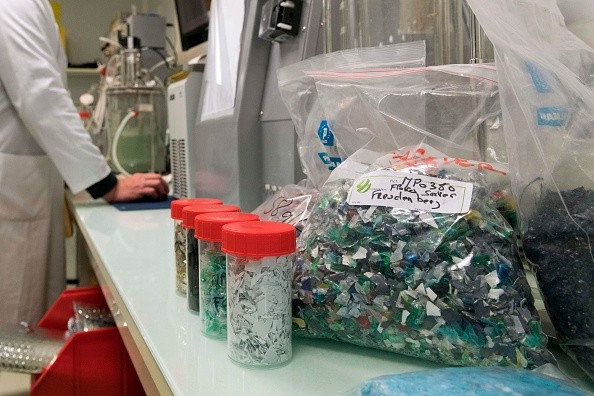Researchers who pioneered the use of enzymes to consume plastics have made a crucial step forward in discovering environmental solutions to worldwide plastics.
They identified an enzyme with a surprising ability to aid in the breakdown of terephthalate (TPA), one of the chemical building blocks of polyethylene terephthalate (PET) plastic.
The scale of problems in plastics

The study, posted in The Proceedings of the National Academy of Sciences (PNAS), was co-led by Professor Jen DuBois of Montana State University and Professor John McGeehan of the University of Portsmouth, who led an interdisciplinary coalition that designed and implemented a natural enzyme that could dissolve PET plastic in 2018.
According to ScienceDaily, PET polymer is broken down into the synthetic building units ethylene glycol (EG) and TPA by enzymes (PETase and MHETase).
This new study outlines the following measures, especially for dealing with TPA.
While EG is a chemical with many uses it's part of the antifreeze you put in your car, for example, Professor DuBois explained, TPA doesn't have too many uses outside of PET.
Moreover, Portsmouth subsequently released that an enzyme from PET-consuming bacteria recognizes TPA like a hand in a glove.
Within their group at MSU then illustrated that this enzyme, called TPADO, starts to break down TPA and fairly much only TPA
With over 400 million tons of plastic trash created each year, the majority of which end up in landfills, it is anticipated that this research may pave the way for better bacterial enzymes like TPADO.
According to the trade group Plastics Europe, 367 million tonnes were manufactured globally in 2020, the most recent year for which we have statistics, as per The Guardian.
This showed a minor decrease from 2019, when 368 million tonnes were produced, although this was most likely due to the Covid-19 pandemic: output having previously climbed practically every year since the 1950s.
A significant portion of this is squandered. According to the World Bank, the world created 242 million tonnes of plastic garbage in 2016.
In addition to the risks of the polymers alone, they include several additives that leak into the water.
Also Read : Plastic Concrete: Company Aims to Accomplish Zero Waste by Creating Sustainable Construction Materials
On the big scrapheap
Experts from Japan's Kyoto Institute of Technology, lead by bacteriologist Kohei Oda, revealed an unexpected discovery in 2016.
Oda's team visited a recycling facility that specializes in items made of polyethylene terephthalate (PET), a transparent plastic used to make clothing fibers and plastic containers.
PET, like all polymers, is made up of long string-like molecules. These are made up of smaller particles that have been connected into one chain.
Professor McGeehan, Director of the University's Centre for Enzyme Innovation, stated that "in the last few years, remarkable improvements have been made in the design of enzymes to decompose PET plastic into its basic parts."
This research takes it a step further, looking at the first enzyme in a cascade that can dismantle those basic components into simpler substances.
We were able to construct a comprehensive 3D structure of the TPADO enzyme using strong X-rays from the Diamond Light Source, revealing how it executes this critical process.
© 2025 NatureWorldNews.com All rights reserved. Do not reproduce without permission.





